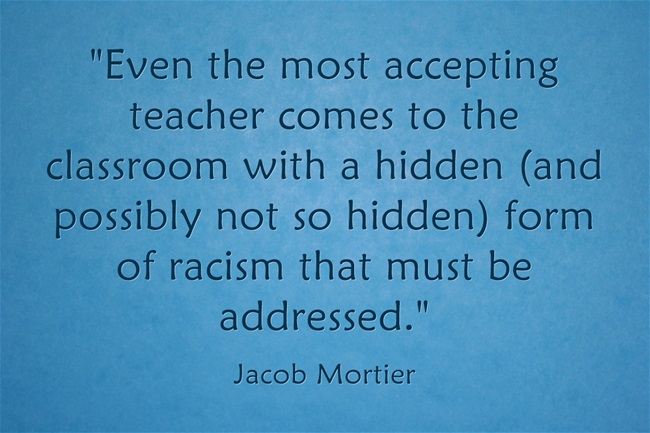Editor’s Note: This commentary by Jacob Mortier was originally intended for inclusion into my three-part Education Week Teacher series on approaching race and implicit bias in the classroom. Because of some confusion, however, I didn’t receive it in time.
Jacob Mortier is a Vice Principal at Desmond Middle School in the Madera Unified School District in Madera, California and is a member of the Instructional Leadership Corps, a collaboration among the California Teachers Association, the Stanford Center for Opportunity Policy in Education, and the National Board Resource Center at Stanford.
A very important aspect of approaching race in the classroom is to acknowledge that it exists. Even the most accepting teacher comes to the classroom with a hidden (and possibly not so hidden) form of racism that must be addressed. In addition, we must understand that students themselves come with preconceived ideas based on race. Thus, we must recognize that racism exists in order to move forward with content learning.
Once a teacher recognizes that race exists, it is very important to strategically discover how race shows up in classrooms, the school site, and the surrounding community. This may be done through surveys, reflective conversations, or other methods that promote deeper, interpersonal learning, not divorced from content.
Once information is attained, it is the responsibility of the teacher to strategically design lessons that help students grow as individuals. This may be accomplished by incorporating student names in class activities or questions that represent a variety of races or by presenting videos that feature presenters who look like them.
As a white teacher, I return to the thought that recognizing race in the classroom is the first step, however difficult it may be. As teachers, we cannot provide lower-level tasks and lower our expectations of students of color simply due to our implicit biases. Instead, we must work diligently to educate ourselves and be change agents, even if it may take extra work.




Recent Comments